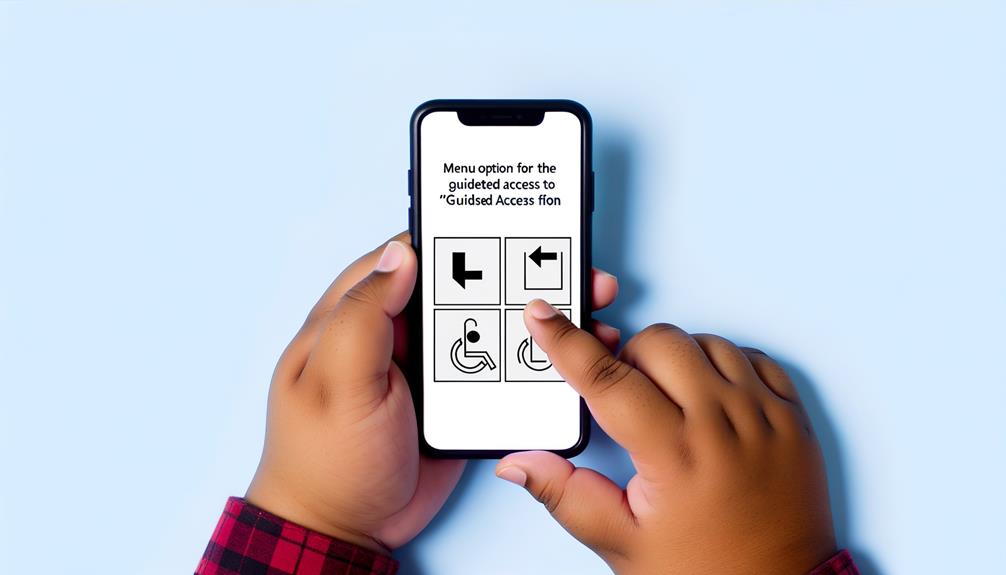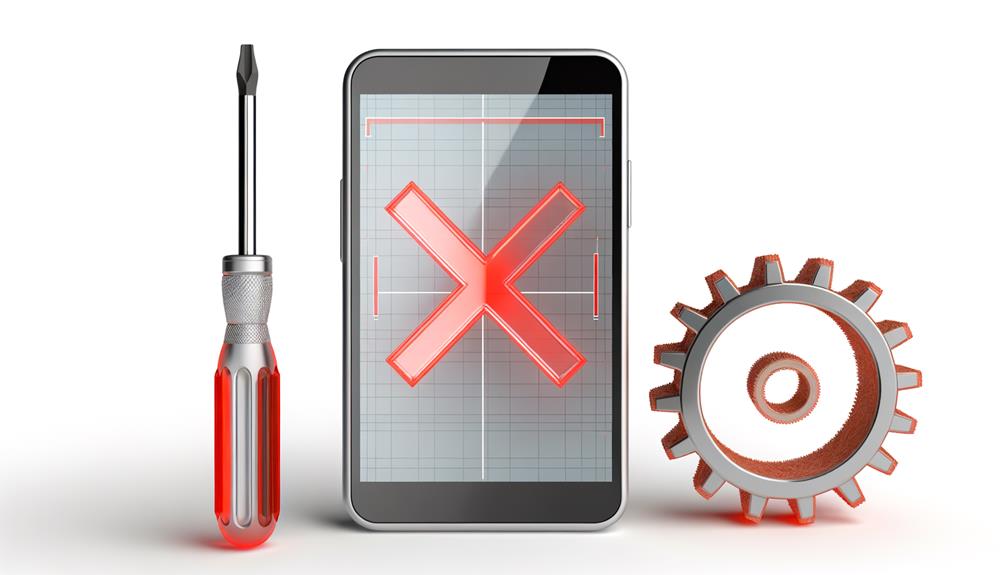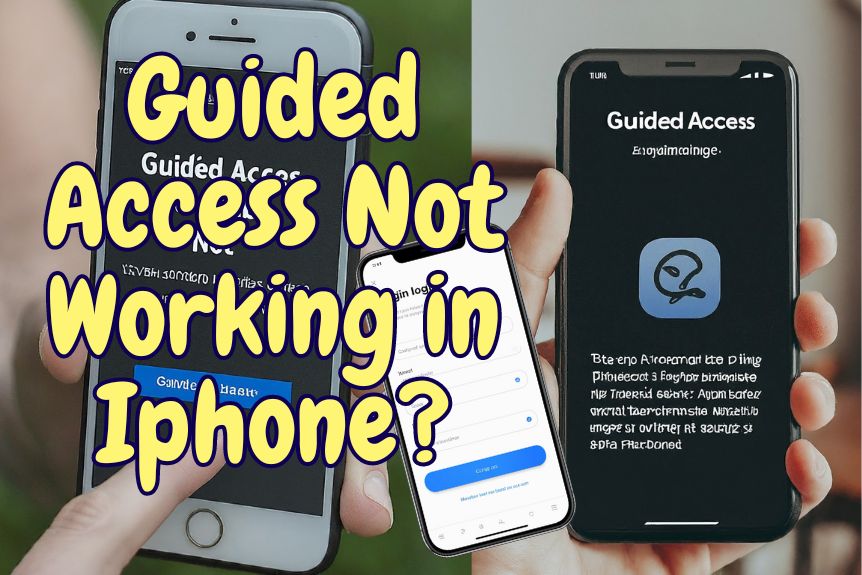If your iPhone’s Guided Access isn’t working, don’t worry. Start by checking your settings. You need to activate it under ‘Accessibility’ and secure your sessions with either a passcode, Face ID or Touch ID. You can control the feature by triple-clicking the side or home button. Still having issues? Restarting your phone or updating your iOS often fixes temporary glitches or compatibility issues. A deeper exploration into advanced solutions may be needed if the problem persists, where options like a force restart, iOS System Repair, or even a Factory Reset might come into play. Stick around, we’re going to explore such details.
Understanding Guided Access Functionality

To fully grasp the utility of your iPhone, it’s important to understand the functionality of Guided Access and how it can enhance your productivity and concentration. This feature helps you stay focused on a specific task by limiting your device to a single app. It’s particularly useful for apps like TD Snap or Compass, where your focus is essential.
Now, you might be wondering how Guided Access works. Well, it’s simple. You can activate guided access through your iPhone settings, under the ‘Accessibility’ option. It gives you the power to customize which features are available within the app during its use. For instance, you can deactivate the Home button, preventing accidental exits from the app you’re working on. This control helps to limit distractions and interruptions, thereby boosting your productivity.
However, like any other feature, you may encounter Guided Access issues. This could range from the feature not working as expected, to difficulties in setting it up. But don’t worry, there are ways to fix Guided Access. You could explore ‘Screen Time‘ settings or seek professional help. Understanding this feature can greatly enhance your iPhone experience.
The Role of Iphone Settings
Accessing your iPhone settings is important for effectively using and customizing Guided Access. These settings play a key role in managing the Accessibility features, thereby enhancing the usability of your device. Specifically, you can turn on and configure Guided Access under the Accessibility section in your iPhone settings.
While using Guided Access, your iPhone settings also allow you to secure sessions through Passcode settings. This feature makes sure that your device is well-protected even during a Guided Access session. To strengthen the security, you can also use customizable options such as Face ID or Touch ID. These can be set to end Guided Access sessions, adding an extra layer of protection.
In addition, you can control available features and settings for Guided Access by triple-clicking the Side or Home button. This action quickly activates Guided Access, allowing you to customize the settings as per your requirements.
In essence, understanding and utilizing iPhone settings can greatly enhance your Guided Access experience, from starting a session to implementing customizable options for ending a session. But remember, if your Guided Access isn’t working as expected, it might be time to explore restart and update procedures.
Restart and Update Procedures

When you’re encountering problems with Guided Access not functioning correctly, it’s a good idea to contemplate restart and update procedures as your first line of troubleshooting. These methods can often resolve your issues and restore the functionality of Guided Access.
Here are four steps you can take to troubleshoot this issue:
- Restart – Often, a simple restart can resolve the issue of Guided Access not working. It’s the first step in any troubleshooting process as it can clear temporary glitches and refresh the system.
- iOS update – Updating your iPhone’s operating system can fix bugs and improve app compatibility, including Guided Access. Make sure your iPhone is running the latest iOS version.
- Reset settings – Go to your iPhone’s settings and reset the Guided Access settings. This can calibrate settings and solve issues.
- Check App compatibility – Some apps may not support Guided Access. Verify if the app you’re using is compatible with this feature.
Lastly, calibrate your battery settings. A poorly calibrated battery can drain quickly during a Guided Access session, which may disrupt the session and cause it to end prematurely.
Troubleshooting Guided Access
Despite your best efforts, if you’re still having trouble with Guided Access, there’s a systematic approach to troubleshooting this feature on your iPhone. Firstly, try to restart your iPhone as this can often resolve Guided Access not working. This action refreshes your device’s system, which could potentially alleviate the issue.
If the problem persists post restart, make sure your iPhone’s software, iOS, is up-to-date. Sometimes, older versions of iOS may not support the current version of Guided Access, causing it to malfunction. It’s important to regularly update iOS to make certain all features work seamlessly.
Next, you might need to reset your Guided Access settings to troubleshoot problems. You can do this by going into your Guided Access settings and resetting the configuration to default. This could rectify any settings that may be causing the issue.
Moreover, check for app compatibility. Be sure the apps you’re trying to use with Guided Access are compatible with this feature. If basic troubleshooting steps fail to resolve your issue, don’t hesitate to contact Apple Support for professional assistance. Remember, enabling and correctly setting up Guided Access is a critical step in effectively using this feature.
Advanced Solutions for Persistent Issues

In the face of persistent Guided Access issues that don’t yield to standard fixes, it’s time to explore advanced solutions that provide more in-depth troubleshooting. These techniques go beyond the basics and are designed to tackle stubborn problems that resist standard repairs.
- Force Restart: This is a soft reset that can clear minor software glitches. To perform a force restart, simply press and hold the power button and the volume down button until the Apple logo appears.
- Standard Repair or iOS System Repair: Tools like ‘iOS System Repair’ can fix persistent issues without data loss. This software puts your iPhone into ‘Repair mode’ which can repair Guided Access problems effectively.
- Factory Reset or Reset All Settings: This should be your last resort as it will erase all data on your device. Before doing this, make sure to back up your data using ‘Transfer or Reset iPhone’.
- DFU mode (Device Firmware Update): This is the deepest type of iOS restore. It also requires you to back up as it will erase all content. Enter DFU mode then restore your iPhone.
